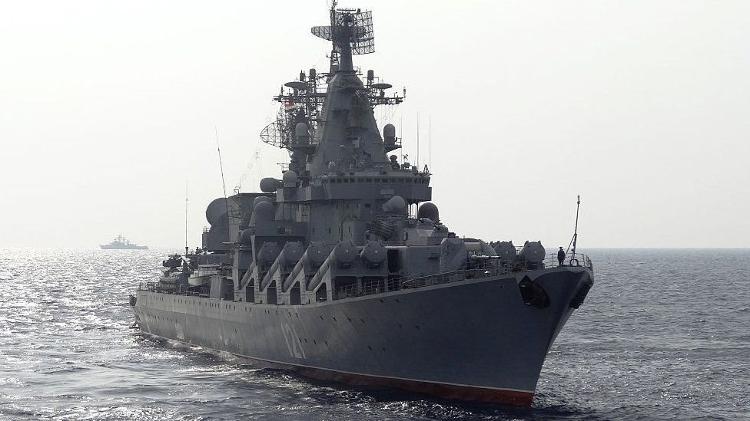More than four months after the start of the war in Ukraine, Russia has admitted for the first time that one of its warships was sunk by the attack of the opposition army. This is the Saratov landing craft, the remains of which were removed by Russian troops to prevent the detonation of the ammunition on board.
The ship was the target of a Ukrainian attack on the Russian-occupied port of Berdiansk on March 24 this year. At the time, Kyiv reported that seven missiles had been fired into the area, which damaged port infrastructure and sank a ship.
The ship was initially reported to be Orsk, but the General Staff of the Ukrainian Armed Forces later reported that Saratov was destroyed and two Ropucha-class ships, Caesar Kunikov and Novocherkassk, were damaged. But Moscow has always denied that the Ukrainians attacked any Russian ships.
The removal of the Saratov remains was confirmed on Telegram by Vladimir Rogov, an official appointed by Moscow for Southern Ukraine, and received by the BBC. The message claims that Russia managed to salvage a “large sunken landing craft” in the port of Berdyansk. Lifting was necessary “to prevent the explosion of ammunition on board.”
According to Rogov, the ship was hit by Tochka-U ballistic missiles, and its remains will now be transported to the Crimea.
meet Saratov
Saratov (BDK-65) was the first landing craft in its series, built in Kaliningrad in 1964. Throughout history, the ship has had to visit many parts of the world. Saratov participated in events in Georgia in 2008 and during the reunification of Crimea in 2014.
The ship belongs to the Crocodile class, a Project 1171 class vessel, or the Tapir class, which is known for amphibious transports suitable for use on the coast. The Crocodile nickname was NATO’s code name for the Soviet army’s Tapir ships.
The Crocodile or Tapir class arose from the former Soviet Union Navy’s proposal to build amphibious ships. Some of the first ships developed under this plan were the Polnocny class, which included 900-tonne medium landing craft to carry heavy armaments and infantry units.
Saratov turned out to be a ship designed to lead formations. It belonged to the strategic sub-unit of the Black Sea Fleet and was located on Lake Donuzlav, where it was decommissioned in Odessa until 1994, when the Soviet Union collapsed. The ship was reported to be in active operations in 2000.
In 2008, Saratov entered active service under the 197th Landing Craft Brigade of the Black Sea Fleet, along with Osrk of the same class, and in 2013 was used to transport military equipment from Novorossiysk to Tartus in Syria. civil war in that area.
Capacity
This ship could carry up to 1,000 tons of cargo and had a compartment for armored vehicles in the bow, as well as a ramp for disembarking soldiers. It can carry a full load of up to 20 main battle tanks or 45 armored vehicles, as well as 300 soldiers or 50 military trucks.
Moscow
The missile cruiser Moskva, the mother ship of the Russian Black Sea fleet, sank after being deeply damaged in an explosion on 13 April this year. At 12,500 tons, it is the largest Russian warship sunk in combat since the Second World War. With a crew of 510, the ship was a symbol of military might and led the naval portion of Russia’s attack on Ukraine.
The Ukrainian government claims the explosion was caused by an attack by its own forces. According to the Ukrainian Armed Forces, they would use a domestically produced Neptune missile. The Russian Defense Ministry said the ship was towed into port when “stormy seas” caused it to sink.
Black Sea Fleet
The Black Sea Fleet is an operational and strategic unit of the Russian Navy in the Black Sea. The Russian Black Sea Fleet, which is part of the navy, is a way to ensure Russia’s military security in the south.
To perform the tasks, the Black Sea Fleet has diesel-powered submarines, surface ships for operations in the ocean and near sea areas, sea missile carrier aviation, anti-submarine and combat aviation, coastal units.
Currently, the main tasks of the Russian Black Sea Fleet are as follows:
- protect the economic zone and production activity areas, as well as condemn illegal production activities;
- ensure navigation safety;
- implement government foreign policy actions (visits, routine entries, joint exercises, actions as part of peacekeeping forces, etc.) in economically important areas of the oceans.
source: Noticias
[author_name]
